How to Make Funnel Cake: Using Temps to Bring the Fair Home
I suspect that a poll of people at any given county or state fair would reveal that one of the main reasons for going would be the food. Fair food is infamously fried and famously delicious, and a strong candidate for President of Fair Food is the funnel cake.
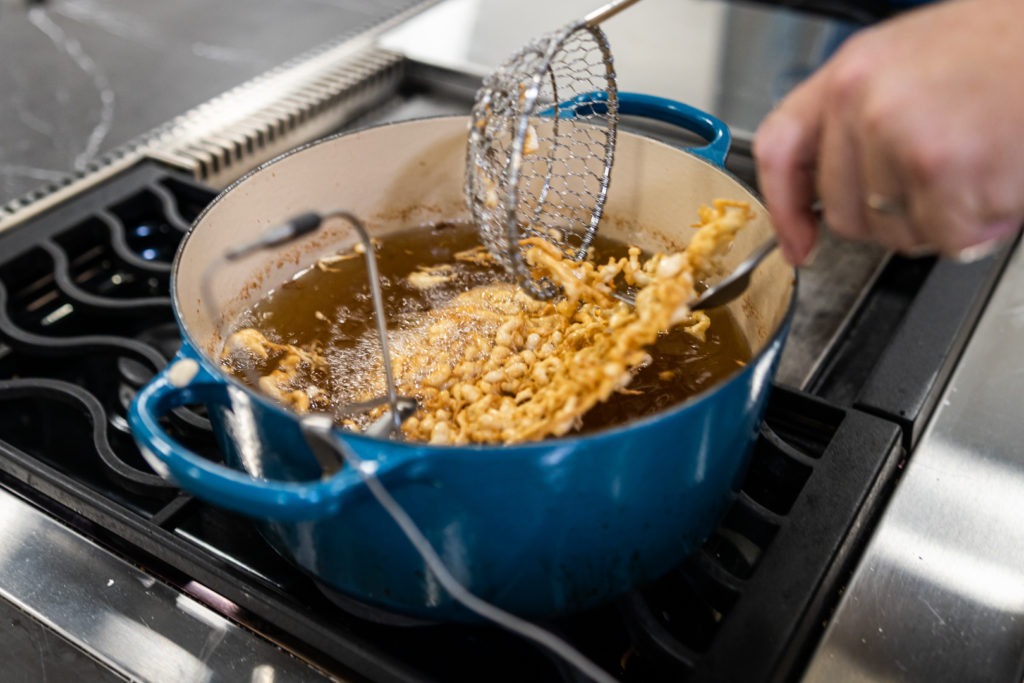
Funnel Cake Frying Temp: 375°F
These cloud-like, lightly crisp cakes are pure-bred American joy, and are, sadly, almost only to be had at outdoor fairs. I certainly don’t recall ever seeing them on the menu at a restaurant, and there’s no way I’d take a chance on a frozen one from the store if ever I saw it. No, these tangled pastry webs are the sole provenance of the county fair, state fair, odd outdoor flea market, and amusement park. But if that’s not good enough for you, or if your local fair was canceled this year and you need your fix, then we have the solution. Make your own! With a ChefAlarm®, a heavy pot, and this recipe from King Arthur Baking, you can have all the funnel cakes you want. Let’s dive on in!
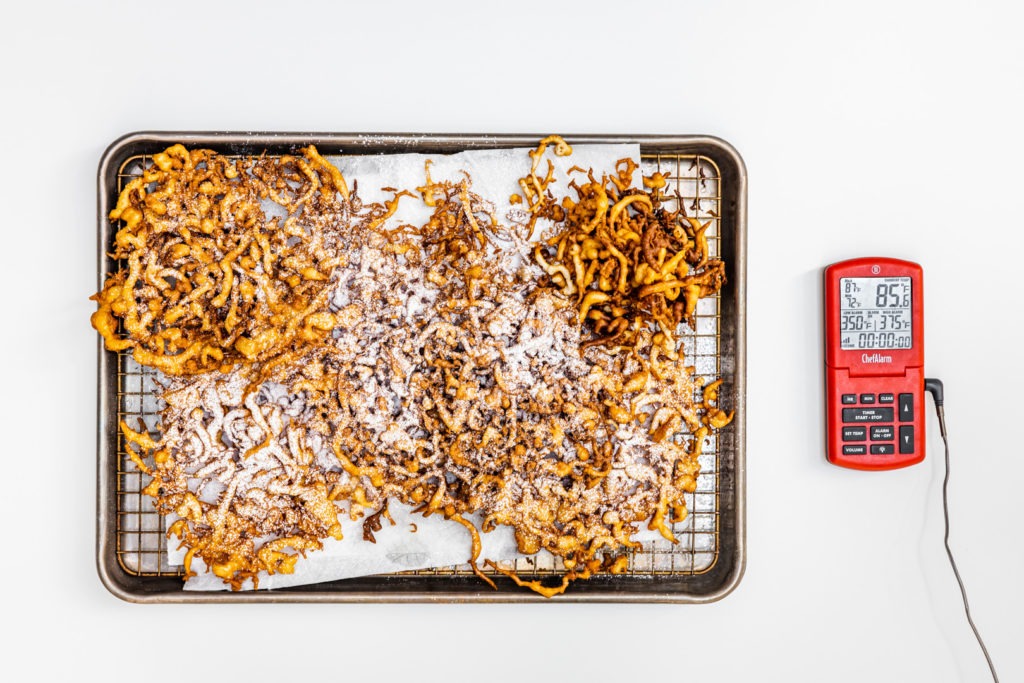
What’s a funnel cake?
If you are asking that question right now, then, well, that just goes to show that life isn’t fair. Everyone should know what funnel cakes are! But life isn’t fair, so here it is. A funnel cake is a pastry confection that is made by pouring an almost pancake-like batter through a funnel or other narrow opening into a vat of hot oil. The thin stream of batter cooks on the outside almost immediately, allowing a nest of batter to form. The cake is flipped in the oil once or twice before being drained and topped with powdered sugar and, if you like, jam or another sweet/syrupy topping (honey would not be amiss). The result is fun to eat—you can pick at it with fingers, removing the sweetest or crispiest bits one by one, or you can plow your way in, face first, with little nubs of cake falling to the plate as you bite off their supporting structure. Messy fingers and messy faces are de rigueur for funnel cake consumption, and should not be looked down upon. Funnel cakes are about joy, not cleanliness.
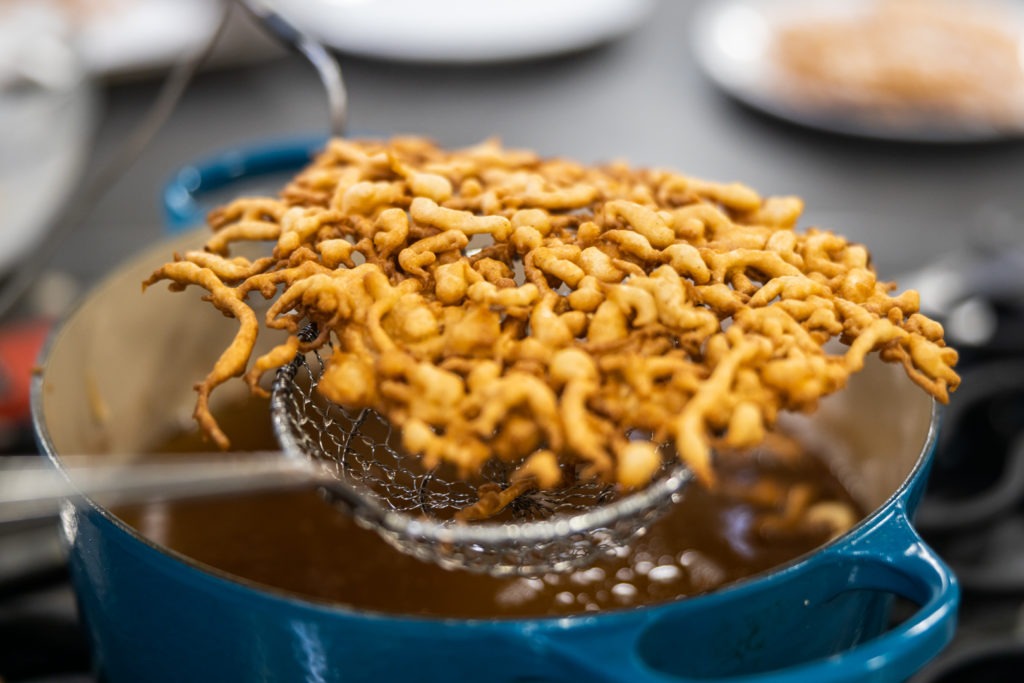
A perfect funnel cake will be golden brown on the outside and tender on the inside. It should not be oil logged or soggy, nor should it be underdone and doughy inside. To make sure you hit both of those points on your homemade funnel cakes, pay attention to the frying temps and the batter consistency.
Funnel cake frying temperature
In order for a funnel cake to even work at all, a relatively high frying temperature is needed. 375°F (191°C) is high enough to start coagulating the proteins and gelling the starches in the batter almost on contact, preventing the batter from literally frittering away. A lower temp wouldn’t get the cooking going fast enough, and slower cooking would also result in a soggy, oil-logged funnel cake.
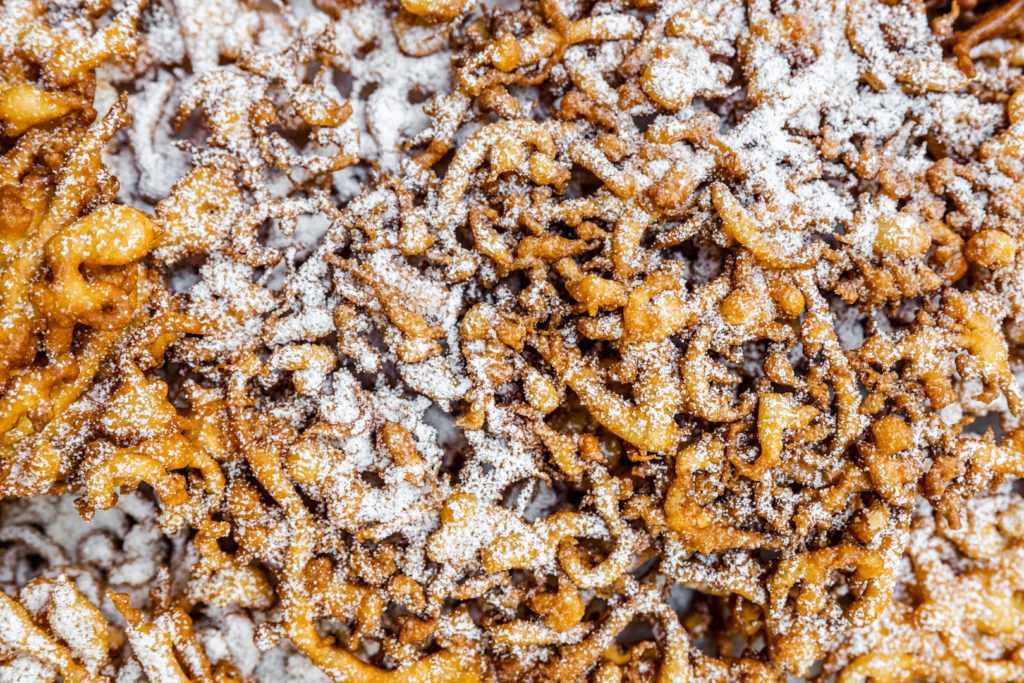
Of course, getting that temperature right is not merely a question of guessing, or flicking a few drops of water into a hot oil pan. A bread crumb will sizzle and a drop of water will pop at temperatures well below 375°F (191°C). Using a thermometer is the only way to really know how hot your oil is and to ensure a proper cooking environment for your funnel cakes—or any other fried food, for that matter! The ChefAlarm is perfect for deep frying, with its high- and low-temp alarms and included pot clip.
Note that these cakes cook very quickly. Only 15-30 seconds may elapse before you need to flip the cake, a task that is most easily done with a mesh spider tool and a fork.
Batter consistency
For a funnel cake to set up properly and to cook through before burning on the outside, it must have the right consistency. Too thin, and the batter will scatter in the oil, too thick and it will clump, not forming the fun strands and, possibly, not cooking inside before the outside is done.
The consistency you want is just thinner than a pancake batter. It should be able to flow easily, but not as easily as, say, thick cream. Some experimentation may be in order, depending on the water content and brand of flour you use. (Flour absorbs humidity from the surrounding air. Wetter flour needs less water to achieve the same results. Once you get the consistency that you like for your cakes, note what the batter is like and shoot for that viscosity every time.)
How to top a funnel cake
Funnel cakes are usually given a small blizzarding of powdered sugar, much like the famous beignets of New Orleans. But that is far from the end of the story. Many funnel cake stands also provide the option of a fruit—or other sweet—topping. Really, funnel cakes are a blank canvas. Use pie filling, use jam, use honey, use butter, use honey butter. Chocolate syrup, caramel sauce, butterscotch topping are all great. Look, there are no rules here. Use a funnel cake as a raft for carrying some tender smoked brisket to your mouth. I tried it. It’s tasty. While I think that omitting the sugar and using spicy chili will be too messy, I cannot say that it will not be delicious. Go for it!
Print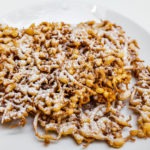
Homemade Funnel Cakes Recipe
Description
Taken from the recipe at King Arthur Baking.
Ingredients
- 6 C vegetable oil or shortening, for frying
- 1 1/2 C milk
- 2 large eggs
- 2 C (241g) All-Purpose Flour
- 1 tsp baking powder
- 2 Tbsp granulated sugar
- 1/2 tsp cinnamon
- 1/2 tsp salt
- 3/4 C powdered sugar (for topping)
- Jam or other toppings, as desired
Instructions
- Heat the oil in a deep, heavy pot. Use a pot clip to suspend the probe of a ChefAlarm in the oil without touching the sides or bottom of the pot. Set the high-temp alarm for 375°F (191°C).
- Whisk the eggs and milk together in a large bowl. In a separate bowl, combine the dry ingredients.
- Add the dry ingredients to the wet ingredients and stir to combine. Continue stirring until the batter is smooth.
- Once the batter is mixed and the oil is hot, make the first cake by putting one finger over the hole in a funnel, then scoop a ladleful (about 1/2–3/4 cup) of batter into the funnel.
- Holding the funnel close to the surface of the oil, remove your finger from the hole and allow the batter to run into the oil. Move the funnel around try to create a base on which to continue pouring. This part is tricky to grasp, but one or two tries should teach you how it works. You want a tangled raft/nest-like cake. There will be lots of little floaty bits that don’t adhere to the central cake.
- When the bottom side is golden brown, use a slotted spoon or wire spider and a fork to flip the cake over and finish on the second side. The ChefAlarm will be monitoring the oil temp during the whole process. Adjust the heat as necessary to try to maintain a temperature that doesn’t go below 350°F (177°C) the temp will drop when you add batter to the oil) or above 375°F (191°C).
- Once the cake is golden brown and delicious, remove it from the oil and place it on a rack or some paper towels to drain and cool slightly. You can start frying a second cake then dress the one you just removed from the oil. Continue until all the batter is gone.
- Dust the funnel cake with powdered sugar while it is still hot, top with additional toppings as desired, and enjoy!
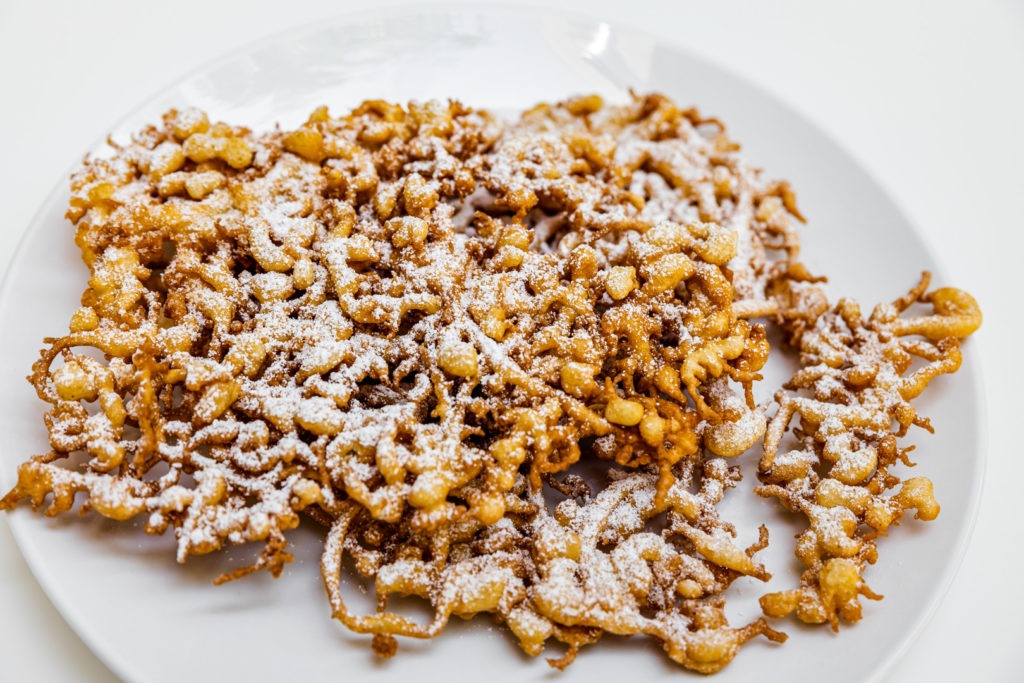
Why would we not eat these at home? I have no idea. Not only are they very easy to make, but they are miles cheaper than the ones you buy at fairs. I have easily been charged upwards of five whole simoleons for what I think can be calculated out to about 35¢ worth of ingredients. Give it a try! With the help of the ChefAlarm, it’s easy to get right, and you’ll get to experience American food royalty without even having to pack the kids in the car.
Shop now for products used in this post:


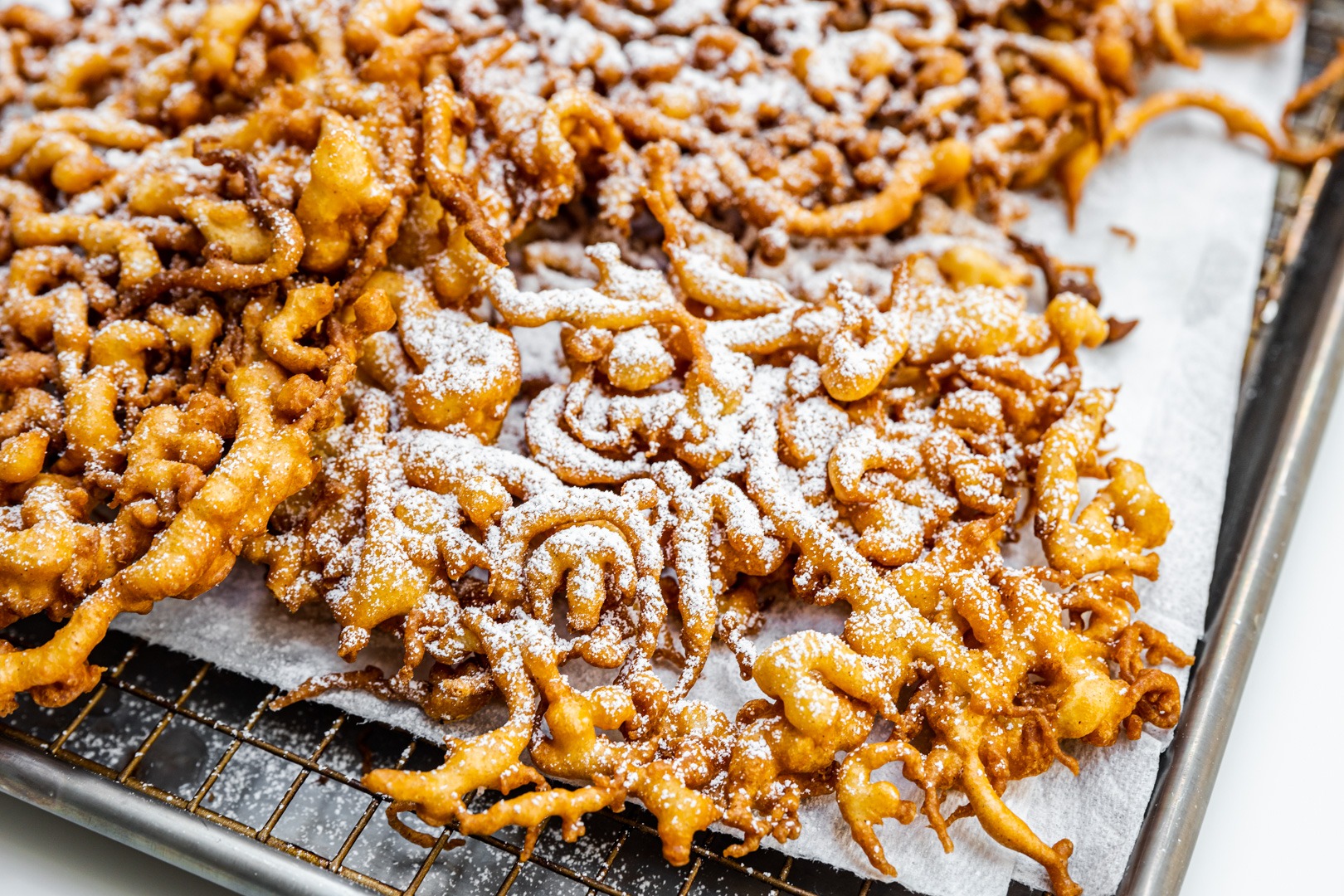
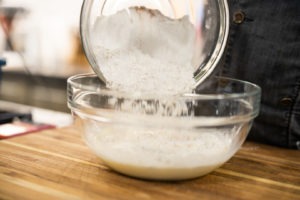
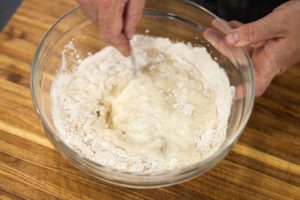
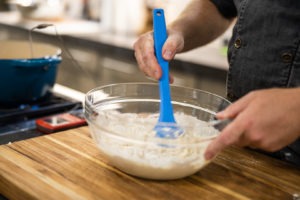
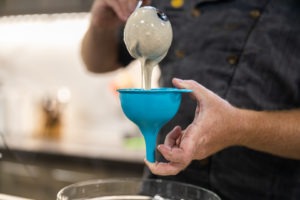
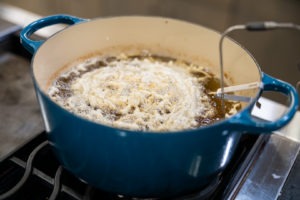
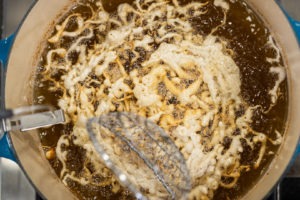
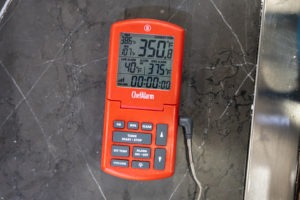
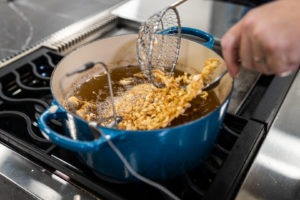
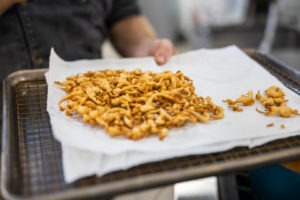
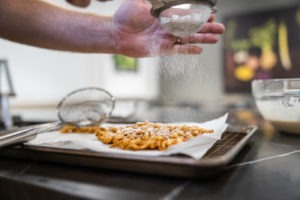

What happens if you don’t have a funnel what can you use
You can try to gently, carefully pour from a pitcher, I suppose. You could also fill a gallon zip-top bag with batter, snip the corner, and pipe the batter into the oil.